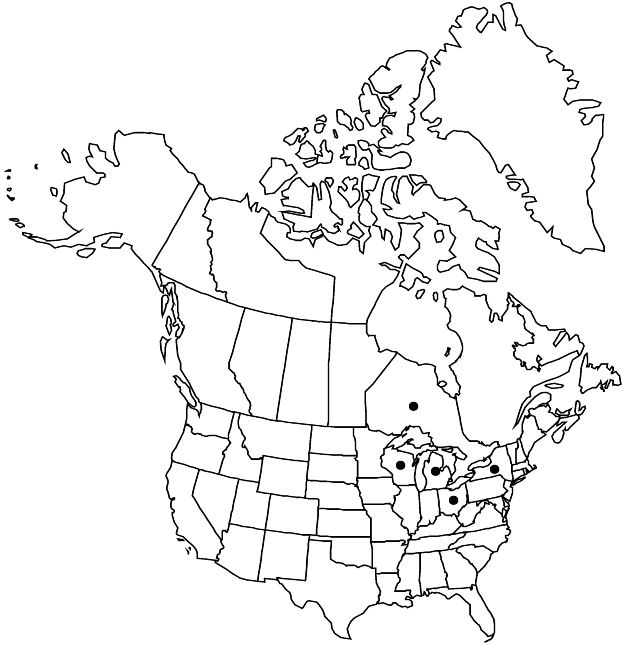Difference between revisions of "Crataegus beata"
Proc. Rochester Acad. Sci. 4: 97. 1903.
FNA>Volume Importer |
imported>Volume Importer |
||
| (5 intermediate revisions by 2 users not shown) | |||
| Line 36: | Line 36: | ||
-->{{#Taxon: | -->{{#Taxon: | ||
name=Crataegus beata | name=Crataegus beata | ||
| − | |||
|authority=Sargent | |authority=Sargent | ||
|rank=species | |rank=species | ||
| Line 51: | Line 50: | ||
|publication year=1903 | |publication year=1903 | ||
|special status=Endemic | |special status=Endemic | ||
| − | |source xml=https:// | + | |source xml=https://bitbucket.org/aafc-mbb/fna-data-curation/src/2e0870ddd59836b60bcf96646a41e87ea5a5943a/coarse_grained_fna_xml/V9/V9_970.xml |
|subfamily=Rosaceae subfam. Amygdaloideae | |subfamily=Rosaceae subfam. Amygdaloideae | ||
|tribe=Rosaceae tribe Gillenieae | |tribe=Rosaceae tribe Gillenieae | ||
Latest revision as of 23:00, 5 November 2020
Shrubs, 60 dm. Stems: twigs: new growth dark orange-green tinged with red, glabrous, 1-year old bright reddish brown, older mid gray; thorns on twigs straight to slightly recurved, 2-years old dark, shiny reddish brown, stout, 3.5–4.5 cm. Leaves: petiole 2.5–4 cm, hairy young, glabrescent, ± densely glandular; blade broadly ovate to deltate-ovate, 5–8 cm, subcoriaceous, base broadly rounded to subtruncate, sometimes broadly cuneate, lobes 4 or 5 per side, ± triangular, sinuses not recorded, lobe apex acute to acuminate, margins strongly serrate, veins 5 per side, apex acuminate, surfaces glabrous except adaxial ± appressed-hairy young. Inflorescences 5–12-flowered; branches glabrous; bracteoles few, margins glandular. Flowers 16–18 mm diam.; hypanthium glabrous; sepals narrowly triangular, margins subentire or slightly glandular, abaxially glabrous; stamens 20, anthers deep maroon; styles 3 or 4. Pomes crimson, oblong to oblong-obovoid, 9–10 mm diam.; sepals spreading; pyrenes 4 or 5, dorsally grooved.
Phenology: Flowering May; fruiting Sep–Oct.
Habitat: Brush
Elevation: 100–300 m
Distribution

Ont., Mich., N.Y., Ohio, Wis.
Discussion
Crataegus beata is a rare, variable taxon that here comprises all the 20-stamen forms of ser. Populneae and may be more widespread than indicated. Syntype material has resemblances to C. schuettei and C. stolonifera. The very small amount of material available to the author is characterized by tan or very dark (brownish to blackish) one-year old wood and one-year thorns, sharply dissected, narrower, C. levis-like leaves, or more shallowly incised (except in extension shoots) C. populnea-like coriaceous foliage and glandular-serrate sepals. In these, the anthers are pink to red and the pomes large, oblong-orbicular, and red. The young leaves are densely short, scabrous hairy adaxially when young.
Selected References
None.